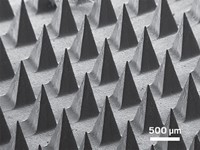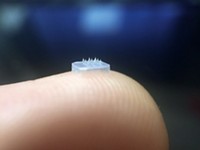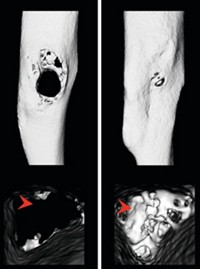Advertisement
Grab your lab coat. Let's get started
Welcome!
Welcome!
Create an account below to get 6 C&EN articles per month, receive newsletters and more - all free.
It seems this is your first time logging in online. Please enter the following information to continue.
As an ACS member you automatically get access to this site. All we need is few more details to create your reading experience.
Not you? Sign in with a different account.
Not you? Sign in with a different account.
ERROR 1
ERROR 1
ERROR 2
ERROR 2
ERROR 2
ERROR 2
ERROR 2
Password and Confirm password must match.
If you have an ACS member number, please enter it here so we can link this account to your membership. (optional)
ERROR 2
ACS values your privacy. By submitting your information, you are gaining access to C&EN and subscribing to our weekly newsletter. We use the information you provide to make your reading experience better, and we will never sell your data to third party members.
Pharmaceuticals
Bandage Releases Multiple Drugs Over Time
Materials: A bandage that rapidly releases a blood-clotting agent and then slowly releases an antibiotic could one day help treat severe wounds
by Katherine Bourzac
March 10, 2015

After a gunshot wound or other traumatic injury, timing is critical to stop the bleeding and prevent infection. Now, researchers have developed a dual-function “smart bandage” that could one day help save lives by addressing both problems. The bandage rapidly releases a drug that helps stop bleeding and then slowly dispenses an antibiotic (ACS Biomater. Sci. Eng. 2015, DOI: 10.1021/ab500050m). Smart bandages could be particularly useful to treat wounded soldiers on the battlefield when a medic is not present, says Paula T. Hammond, a chemical engineer at Massachusetts Institute of Technology.
Hammond and her colleagues have been working on drug-releasing bandages for several years. Previously they used a method called layer-by-layer assembly to make films micrometers or even nanometers thick that can release one drug at a time. They dip or spray an object, such as a gelatin sponge, with a water-based solution containing the drug. They alternate this active layer with a solution of another molecule that sticks to the first as a result of surface charge or another complementary property. In earlier studies, the MIT group made a film that released the blood-clotting agent thrombin and stanched bleeding in animal tests (Adv. Mater. 2011, DOI: 10.1002/adma.201103794). Another film released the antibiotic vancomycin over a sustained period of time (Small 2010, DOI: 10.1002/smll.201001150).
But coating bandages and other medical devices with a film that can release multiple drugs over different time scales has proved challenging. “If the clotting agent and the antibiotic come out at the same rate, it’s too slow to stop the bleeding and not a sustained enough release of the antibiotic to prevent infection,” Hammond says.
The researchers wanted to build on their previous work and create a bandage that could release both drugs with the right timing. But they knew that the conditions used to create a thrombin coating would damage an underlying vancomycin film. So they found a way to stabilize the antibiotic coating by covalently attaching vancomycin to poly(β-L-malic acid) (PMLA). The vancomycin-PMLA film stays in place when it’s coated with thrombin. What’s more, PMLA links to vancomycin in a way that doesn’t interfere with the antibiotic’s ability to kill bacteria.
The researchers then tested the properties of gelatin sponges coated with vancomycin-PMLA and thrombin. As the supporting polymers in the film dissolve, most of the thrombin is released immediately, over a few minutes. The vancomycin coupled to PMLA is then released more slowly over the course of a day. In a test tube, thrombin released from the bandages interacted with other blood factors to form clots. In a test of the activity of the released antibiotic, the drug from the bandage killed Staphylococcus aureus bacteria as effectively as a control test with vancomycin.
Hasan B. Alam, a surgeon specializing in critical care and emergency surgery at the University of Michigan Health System, says the bandages look promising but need a lot more study. “It should be tested in animal models of rapid bleeding to generate confidence among trauma surgeons,” he says.
Hammond says her group is currently designing such studies. She is also interested in making other bandages that release different drug combinations such as painkillers or therapies that promote healing.





Join the conversation
Contact the reporter
Submit a Letter to the Editor for publication
Engage with us on Twitter